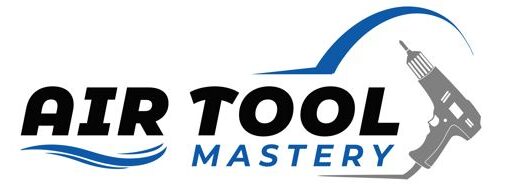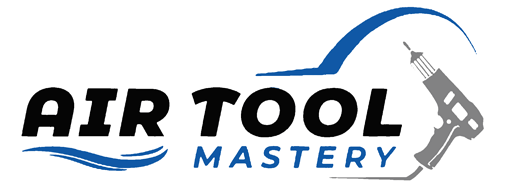In a world where do-it-yourself projects and home maintenance have become not just hobbies but a way of life for many, mastering the use of an air compressor can greatly increase the efficiency and quality of your work. With years of hands-on experience and a deep understanding of pneumatic tools, we have created this comprehensive guide to introduce you to the basics of an air compressor and share insightful tips and practical advice on how to use it effectively.
From inflating tires to powering an array of pneumatic tools, an air compressor is an indispensable asset for both hobbyists and professionals alike. Our expertise, built on real-world applications and technical knowledge, ensures that you gain both the confidence and competence to tackle any task involving an air compressor. Whether you’re a seasoned professional looking to brush up on your skills or a novice eager to start your first project, this guide is your go-to resource for all things related to air compressor usage.
General Guide on How Do You Use an Air Compressor?
Using an air compressor might seem daunting initially, but by following a step-by-step approach, you can operate it safely and efficiently.
Here’s a straightforward guide to get you started:
Check the Oil Level: For oil-lubricated models, it’s essential to check the oil level before use. Running an air compressor with insufficient oil can cause significant damage to the unit.
Connect the Air Hose: Attach the air hose to the compressor, ensuring a tight and secure connection to prevent air leaks.
Attach the Tool: Connect your air tool to the other end of the hose. Ensure the connection is equally secure here.
Power On: Turn on the air compressor. Allow it to build up pressure until it reaches the cut-out pressure and automatically shuts off. This indicates that it’s ready for use.
Adjust the Pressure: Adjust the regulator to match the pressure required for the tool you are using. Using too much or too little pressure can be dangerous and may also affect the efficiency of your work.
Test the Tool: Before beginning your actual work, test the tool on a scrap piece or an inconspicuous area to ensure it is working as expected.
Power Off: Once you have completed your task, turn off the compressor. Bleed any remaining air from the tank using the release valve. Disconnect the tool and air hose.
Common Uses for an Air Compressor
Automotive Tasks: From inflating tires to operating air tools such as impact wrenches, spray guns for painting vehicles, and brake fluid extractors, air compressors are essential in any automotive workshop or garage.
Construction Sites: Air compressors power pneumatic tools, such as jackhammers, nail guns, and sandblasters, facilitating faster and more efficient construction work.
Manufacturing Industry: In manufacturing environments, air compressors power machinery and robotic arms, contributing to automation and efficiency in production lines.
Woodworking and Metalworking Shops: These workshops rely on air compressors to operate tools necessary for cutting, shaping, and assembling projects.
Painting and Decorating: Whether it’s spraying paint on walls and surfaces or applying finishes to furniture, air compressors make these tasks smoother and faster.
Home Maintenance and DIY Projects: For individuals passionate about DIY, air compressors aid in a variety of home improvement tasks, including inflating sports equipment, cleaning debris with compressed air, and powering air-driven tools for home repairs.
Safety Precautions When Using an Air Compressor
Read the Manual: Before operating an air compressor for the first time, it’s crucial to read the manual thoroughly. Understanding the specific model’s features and limitations will help prevent misuse.
Wear Protective Gear: Always wear safety equipment such as goggles to protect your eyes from debris, gloves to guard against scrapes and cuts, and ear protection to shield against the noise produced by the compressor.
Regular Maintenance: Regularly checking and maintaining the air compressor can prevent many issues. This includes checking for leaks, ensuring that valves are in good working condition, and replacing any worn parts.
Keep the Area Ventilated: Proper ventilation in the area where the air compressor is used is essential to disperse any fumes that may be emitted, especially when used for tasks such as spray painting.
Never Exceed Pressure Limits: Each tool and air compressor has a maximum pressure rating. Always ensure you are operating within these limits to avoid damage to the tools and the risk of injury.
Secure Hose Connections: Loose hoses can quickly become hazardous. Ensure all hose connections are secure before starting the compressor to prevent the hose from disconnecting and whipping.
How to Use an Air Compressor for Tires
Check Tire Pressure: Use a tire pressure gauge to determine the current air pressure in your tires. Refer to your vehicle’s manual or the sticker on the doorjamb for the recommended pressure.
Remove Valve Cap: Unscrew the cap from the tire’s valve stem. Keep it in a safe place to avoid losing it.
Connect Air Hose: Attach the air hose from the compressor to the tire’s valve stem. Ensure the connection is secure to prevent air leaks.
Inflate Tire: Turn on the air compressor. Monitor the tire pressure gauge closely and inflate the tire to the recommended pressure. Be cautious not to overinflate.
Check pressure: Once you believe the tire is inflated to the correct level, turn off the compressor and disconnect the hose. Use your tire pressure gauge to check the pressure again. Adjust if needed.
Replace Valve Cap: Screw the valve cap back onto the valve stem to prevent dirt from entering and maintain the correct tire pressure.
Repeat for all tires: Follow the same process for each tire, including your spare, as needed.

